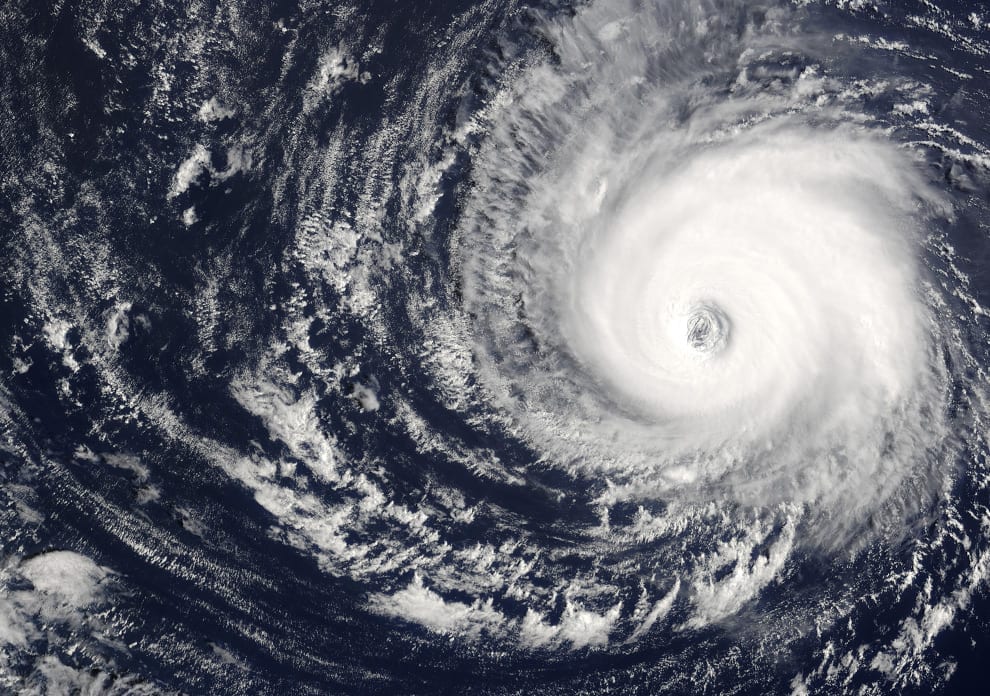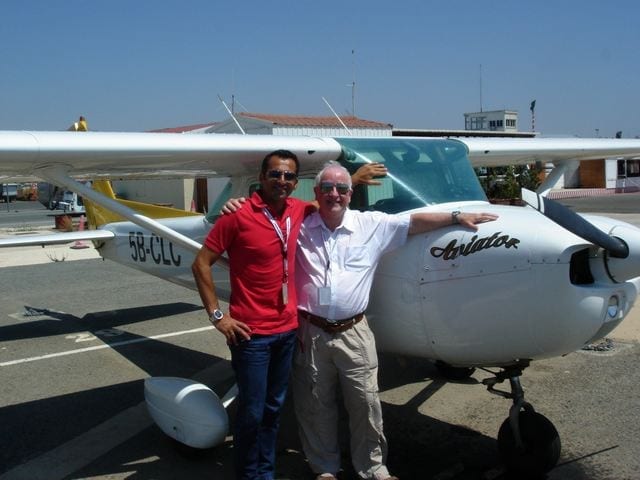The US and Canada have harmonized a lot of the airspace rules and procedures to ensure seamless, safe travel between our two countries. However, I recently discovered some subtle differences between the US and Canadian rules while converting my US IFR rating to the Canadian equivalent that anyone who plans to fly IFR in Canada should probably know.
The Canadian IFR conversion test for US certificate holders is 20 questions. I did well on my FAA instrument rating exam not so long ago, and I file IFR a lot, so I figured I knew the US rules pretty well. But, it has been years since I’ve flown in Canada much, so I sat down with a local instructor to go over the Canadian rules before my test. How different could it be? Same skies, same planes, slight difference in air traffic controller accents. Well, I did manage an embarrassingly close pass, so here’s what I learned:
1. Licensing and Currency: Whether you are valid and current is determined by the licensing country. If you are qualified and current to fly IFR in the US, you can fly your N-registered aircraft IFR in Canada. So, things like night currency and IFR currency are governed by the country you are licensed in. You can’t fly a Canadian aircraft without a Canadian license and the same is true for American airplanes. And in case you want to know, the currency standards are somewhat different, and, in general, it’s harder to keep your Canadian IFR currency – you need six approaches and six hours of IMC or simulator every six months compared with six approaches, some tracking and holds every six months in the US.
2. Filing and cancelling flight plans: If you file VFR or IFR in Canada and then decide not to take off because of a change in personal plans, forgetting to cancel will cause a problem. In the US, an IFR flight plan expires two hours after your expected departure time if not activated. In Canada, since it is assumed that you will take off when you said you would, if you don’t show up in the system, they start a search one hour after the filing starting time since you may have crashed on takeoff from a remote airfield. So, if you don’t remember to cancel a filed flight plan, you may be looking at a big search and rescue bill. Since we all file flight plans using ForeFlight or similar apps these days, you need to be careful if you cancel using the app since there are several layers of notification and it may not be canceled in a timely fashion by the time it gets through the system to Canadian ATC. Best to call FSS directly.
3. Airspace classifications: These are mostly the same. Class A above 18,000 feet. Check. Class B, C, and D are control zones. Check. Except that above 12,500 is considered Class B in Canada, and has to be under ATC control. Which if you’re under IFR is no problem, but VFR has to be below this, or under ATC control. We also have Class F, which is basically forbidden, so it’s similar to restricted airspace in the US.
4. Alternates: If you file IFR, you always have to file an alternate in Canada. So even if you are a US pilot flying a US aircraft in Canada, you need to file an alternate when filing IFR in Canada, even if it’s CAVOK everywhere.
Selecting an alternate airport in Canada is a lot more complicated than the US. There is no simple 1-2-3 FAA alternate rule. To figure out if an airport can be used as an alternate requires knowing such things as the number of precision and non-precision approaches available to different usable runways, adding altitude and visibility factors to the HAT (Height Above Terrain), and then rounding up or down the resulting calculation (so if you calculate the minimum to be 621 feet, you round up to 700 feet; 620 feet rounds down to 600 feet), and comparing with the standard minima of 600-2 and 800-2, but also now including 400-1 for two or more precision approaches. And, oh yeah, in certain cases you can substitute some ceiling altitude for visibility.
Once you know this value, you check against the weather forecast at ETA at the alternate and see if you can use it as an alternate. Phew, I’m tired. Practically speaking there are only a handful of airports in Canada that have ILS approaches to two different runways (and not just the reciprocal of the same runway) such as Vancouver and Toronto, plus the landing fees are very high, so just forget about those; and because you have to use the “worst of” the calculation or the alternate standard, it is never better than 800-2 and 600-2 and can be worse. Except in unusual cases, the end result of all this work won’t differ that much from using the US rule as a guideline except at the margins (Disclaimer: I’m sure someone will write a rebuttal that disproves this generality, or sue me when it goes wrong, but assuming you only occasionally visit Canada, using the standard US alternate rule as a guideline won’t be far off).
5. Attempting an approach: In the US, under CFR Part 91, you can always pop down and take a look if you’re feeling lucky, and go miss if you are below minimums and can’t land. I don’t, because I’m an IFR newbie, but you could. In Canada, whether you can even begin an approach depends on runway visibility. And acceptable visibility is established using many rules involving RVR A and RVR B, ground visibility from the tower and what happens if you are past the FAF inbound when it changes. In other words, visibility is the limiting factor on whether you can begin the approach.
6. Take-off minima: In the US, under CFR Part 91 you can legally take off in zero-zero visibility and ceiling. It’s stupid, but you can do it. In Canada you generally need a minimum runway visibility of 1/2 mile or whatever the published minima are. These are usually located on the departure procedure, but if not indicated anywhere, it’s 1/2 mile.
7. Parlez-vous français? Non? Yes, it’s true, in Quebec you can speak French in the air traffic control system, including IFR under IMC. Bilingual service works pretty well, even in busy airports like Montreal. If you contact the controller in English, they speak to you in English, and ditto if your first call is in French. Not knowing exactly what the other pilot is being told is somewhat disconcerting, but works in Quebec, and, from what I could find out online, there haven’t been any accidents or incidents relating to the dual language issue. If you don’t speak French and venture into northern Quebec, however, you may find mostly French spoken, except in controlled airspace.
Now that you know most of the important things you need to fly IFR in Canada, you should come on up for a visit. And happy flying, or as they say in Quebec, Bon Vol.
- A few of my favorite things from last summer’s trip around the US - June 23, 2020
- Seven things you should probably know before flying IFR in Canada - February 8, 2018














This is a great summary! I wrote this exam when I moved to Canada from the US and even with studying I barely passed! I wish I had material such as this in my research to help me out as the differences were subtle enough that I confused some things such as the alternate minimum requirements.
HAT is Height Above TDZE and not Height Above Terrain.
At least that is what the Canada Air Pilot General Pages (CAP GEN) says.
Here in Western Canada, Class B is controlled airspace above 12,500. It’s not all controlled. There’s some pretty big holes that glider pilots can play in without talking to ATC.
Class B Terminal areas are ginormous. Low level airways and terminal routes count for the rest. My rear gets twitchy over the mountains when I’m stuck below 12,500.
A tip for US flyers going to Canada VFR: Your are required to obtain a clearance from ATC before entering Class C airspace, not just establish two-way communication, as is the case in US Class C airspace.
In point 5. you say that you are an IFR newbie. In point 6 you say “you can legally take off in zero-zero visibility and ceiling. It’s stupid, but you can do it.”
I respectfully disagree with your editorializing. Doing so is legal, practical, and sometimes of great utility. If you’re uncomfortable with it, certainly you should not do it, but those who have had instruction in doing it, have practiced it, and then through the years have in appropriate circumstances have taken advantage of this flexibility are not, in my opinion, “stupid.”
You are, of course, fully entitled to your opinion, but I suggest, again with all due respect, that “stupid” is far too strong a word. It’s guaranteed to raise hackles, especially coming from someone who is a self-described “newbie.”
Excellent article! Terry, I agree to a certain point but “stupid” ain’t far from the truth. Look at this accident (https://aviation-safety.net/wikibase/wiki.php?id=203339) and you know what I mean. Taking off in zero-zero conditions leaves VERY little room for error (I hold an EASA PPL/MEP/IR with 600+ hours) and not even the most experienced pilots I have flown with would do it because why take an extra risk – especially in single engine aircraft?
Terry, STefan: Not wanting to hijack the thread, or argue one way or the other about 0/0 takeoffs. Just a couple of points.
1) During my instrument training at Austin Bergstrom, had an engine failure on takeoff, and HAD to land on the T/O runway. Engine runup was normal, but due to maintenance failure, something came loose at ~50′ in the climb out. Fortunately, 17L at KAUS is a long runway, and I could raise the foggles. If you are going to do a 0/0 takeoff, you need strong confidence in your ride to make it to where conditions are better.
2) Looking at that C340 accident (https://aviation-safety.net/wikibase/wiki.php?id=203339) it strikes me as suspicious that he was overgross, CG out of bounds, and the elevator trim was stuck at full up.
Report concludes pilot spatial disorientation resulting in a commanded left roll into the ground.
What if the electric trim ran the trim to full up during the takeoff, and he didn’t notice, resulting in a stall over the runway, and a spin entry to the left? Look at the post crash impact picture…
Thanks for you article John!
Not stupid, until you have a problem and need to return to land…